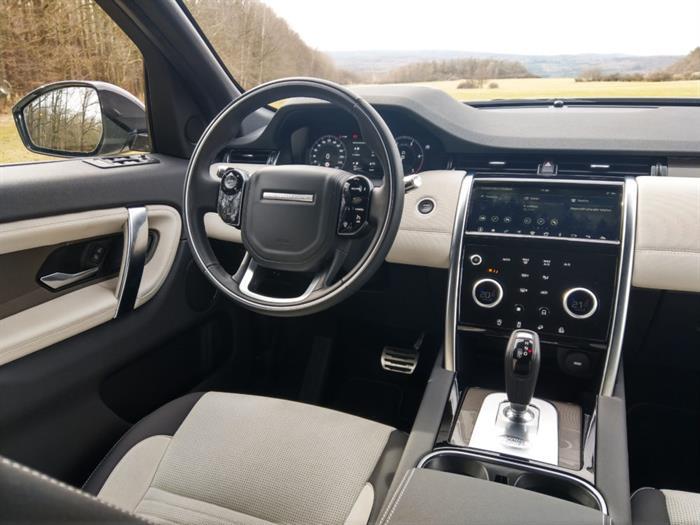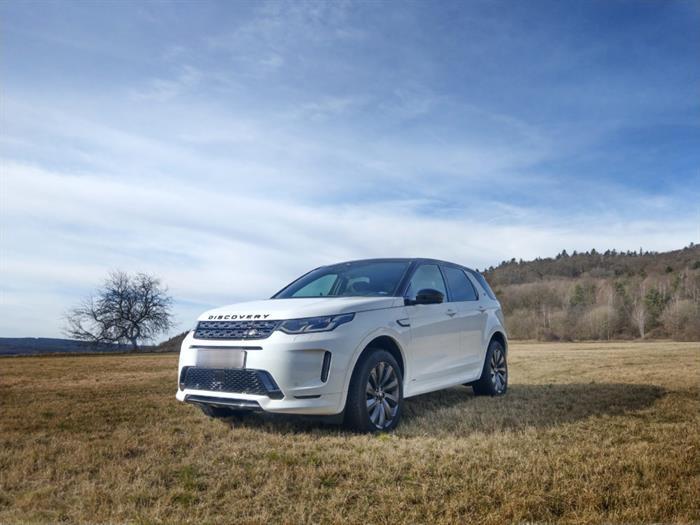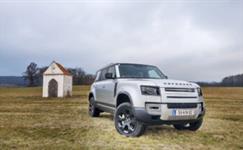Last year was quite rich in news related to the Land Rover brand. We saw, for example, the new iconic Defender, or the second generation Range Rover Evoque, another novelty was the "modernized" Discovery Sport.
The Discovery Sport has been here as the successor to the Freelander model since 2014. Now, with the arrival of the new generation Range Rover Evoque , the Discovery Sport could not be left behind in innovation. So the automaker has prepared a new car for us, which in terms of external appearance only looks like a modernized one, but the new chassis platform makes it a completely new generation.
We have currently subjected it in its "modernized" form to our editorial test. The tested car was a very decent R-Dynamic version with a turbocharged diesel engine and a nine-speed automatic.

Dynamic exterior appearance
The exterior appearance of the Discovery Sport remains, in its basic forms, faithful to the appearance before its current modernization. We will see more significant differences only in individual details, mainly in the concept of the front part itself and the rear lamps.
The front part fully follows the current trend and appearance of Land Rover cars. It thus has a massive front bumper, which elegantly contrasts with the narrow lights that are significantly extended to the side. Of course, there is also a large inscription on the hood of the car, proudly indicating the car company's model.
The wedge-shaped side profile of the car continues the established robustness of the front part. The car here therefore has a significant disproportion between the full part and the glazed part. The massiveness of the side doors is also given by their, purely practical, dragging over the very thresholds of the car. Another very impressive element is the "C" pillar, the considerable tilt of which in the opposite direction of the car ranks the car with its bigger sibling, the classic Discovery .
The rather quiet and horizontally oriented rear part is enlivened by headlights with a new light signature and a roof "fin" with an integrated camera distributing the image to the interior rearview mirror.
Discovery Sport continues to offer classic, yet very pleasing shapes "after modernization". The tested piece was still equipped with the R-Dynamic sports package, which, together with the nineteen-inch wheels and the black and white color combination, looked really great.

Interior
The interior of the new Discovery Sport is very impressive, simple, clean in design. Here, too, we work with a strong contrast, the full surface of the dashboard alternates with a narrow line with integrated air conditioning vents.
The central part of the dashboard is dominated by a pair of rotary "multi-purpose" controls. The basic function of both controls is to set the temperature of the dual-zone air conditioning, by pressing them you will subsequently activate the function of heating or cooling the front seats, with the next control you will effectively activate their third function, on the left is the control of the fan intensity, on the right is the selection of the driving assistant in the terrain (Terrain Response). . This lot is further dominated by the on-board infotainment display, which has very pleasant graphics and a fairly logical environment. It was noticeably worse with the control of the display located in the instrument compartment in front of the driver. It was controlled via the multifunction steering wheel, but its responses were considerably slowed down.
However, I must definitely praise the multi-functional steering wheel, I like how it looks, I liked its larger circumference, as well as the diameter of the rim itself. Its controllers then had a double function and worked very well from the user's point of view.
The massive central tunnel offers a classic automatic transmission selector. By moving it to the side position, you activate the sports mode of the nine-speed automatic, and of course there is also the possibility of manual shifting. In the spirit of "simplicity" of the entire interior, the central panel is spared from any controls. Here, the automatic selector is only supplemented with the car company's logo, a pair of drink holders and a voluminous armrest with a storage box.
The Discovery Sport does well with interior space. The front seats are spacious and comfortable. The same applies to the space in the rear seats. The rear bench will offer enough space for the knees, and in addition, a shift in the longitudinal direction. The tested car had an additional seven-seat specification, which offered a pair of folding seats from the floor of the luggage compartment. These are accessible just by moving and folding the second row of seats. Access to the third row of seats is unfortunately quite uncomfortable. These places are therefore more emergency, possibly for child crew.
The tested white x black interior combination looked very effective, it was matched with the exterior of the car itself. However, I highly doubt its practicality.
A five-seater configuration, i.e. with the third row of seats folded into the floor of the luggage compartment, will offer a trunk volume of 754 l. In the seven-seat specification, 157 liters with the second and third rows of seats folded down, 1651 liters.
Discovery Sport also offers a gadget that came with the new generation of Range Rover Evoque. This is the rear-view mirror, which, when switched, displays a view from the rear-view camera located in the roof "fin". The camera then captures the image behind the car in a much wider field of view, thus offering a far greater overview of what is happening behind the car.
As a result, the interior of the tested car, together with its exterior, formed a very compact and functional whole, which definitely has a lot of flair.

Mild hybrid engine
The offered drive units of the Discovery Sport model are engines from the Ingenium series, there are two gasoline and three diesel engines on offer. It is always a four-cylinder version. The petrol P200 and P249 have outputs of 200 and 249 horses, while the diesel D150, D180 and D240 have 150, 180 and 240 – those horses.
The motorization tested was a diesel, mid-performance variant, i.e. a turbocharged mild hybrid motor with the designation D180 MHEV.
The engine was very quiet. The powerful values offered, i.e. 132 kW of power and 430 Nm of torque, are hampered only by the higher weight of the car. However, you register here only when sharper acceleration is necessary. Otherwise, this unit is very adequate in terms of performance. Its combination with the nine-speed automatic works perfectly at highway speeds, where the engine turns at less than two thousand revolutions at the local speed limit. The consumption itself is around 7.5 liters at highway speed, and on average, count on more like 8.5 liters.
After the Evoque, the Discovery Sport also received a new chassis platform enabling the installation of electrified drives. In order to reduce CO2 emissions and consumption itself, the mild hybrid system collects and stores energy generated, for example, when the car brakes. He then works with this energy. In a car, this system manifests itself, for example, by turning off the engine much earlier before an intersection. On-board devices and other electrical systems of the car are then powered by the previously saved electrical energy.
The Discovery Sport, like a true Land Rover, is definitely not afraid of off-roading. It has the Terrain Response system, an assistant for driving down a steep slope, or a cruise control that maintains a set speed in the terrain. Other gadgets are, for example, a "transparent hood" or a system that measures the depth of wading water.

In conclusion
Looking at the current price list, I find out how varied the selection of this model is. The offer includes the Discovery Sport (Sport S, Sport SE, Sport HSE) or Discovery Sport R-Dynamic (R-Dynamic S, R-Dynamic SE, R-Dynamic HSE). The cheapest Discovery Sport specification is the diesel D150 with a manual gearbox and front-wheel drive only, you can buy it from 986 513
CZK including VAT. The same specification in the Discovery Sport R-Dynamic version starts from CZK 1,047,739 including VAT. Thanks to the numerous motorizations offered, the purchase prices of individual equipment are continuously increasing up to the value of CZK 1,699,566 including VAT, here it is the R-Dynamic HSE version with a turbocharged P250 gasoline engine, automatic transmission, all-wheel drive and twenty-inch wheels.
Land Rover cars, across the entire portfolio, unfortunately do not have favorable purchase prices, but they do have a very distinctive style, original exterior appearance, high-quality workmanship and, last but not least, refined and potent power units. The new Discovery Sport proudly continues in this spirit.





























